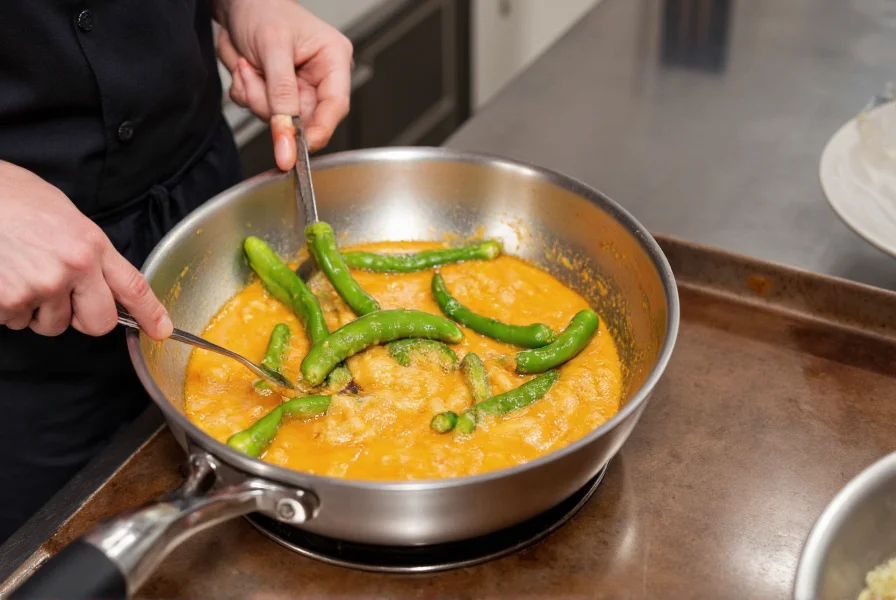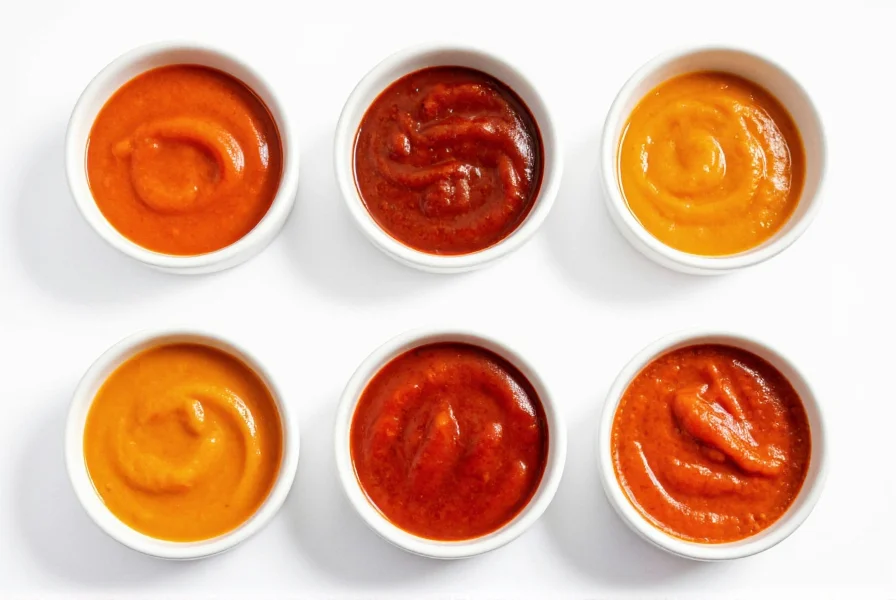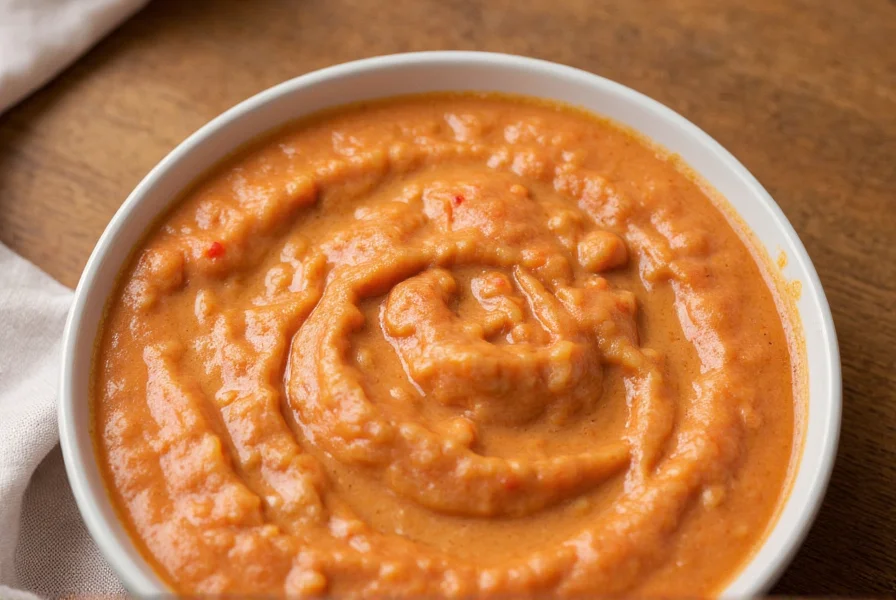Understanding Pepper Sauce Cream Composition
Pepper sauce cream transforms simple ingredients into a sophisticated culinary element. The foundation consists of dairy (typically heavy cream, though alternatives like coconut milk work for dairy-free versions) combined with peppers ranging from mild bell peppers to fiery habaneros. The magic happens when these components meld through careful cooking, creating a sauce that's simultaneously creamy and vibrant with pepper flavor.
Professional chefs emphasize the importance of balancing the pepper's heat with the cream's richness. The ideal pepper sauce cream shouldn't overwhelm with spice but rather offer a subtle warmth that complements rather than dominates the dish. This balance makes how to make pepper sauce cream a valuable skill for home cooks seeking to elevate their culinary creations.

Essential Ingredients and Their Roles
The quality of your pepper sauce cream recipe depends significantly on ingredient selection. Consider these components:
| Ingredient | Function | Recommended Options |
|---|---|---|
| Cream base | Provides richness and smooth texture | Heavy cream, half-and-half, coconut milk, cashew cream |
| Peppers | Delivers flavor and heat profile | Roasted red peppers, jalapeños, poblano, habanero (for spicy) |
| Aromatics | Builds flavor foundation | Shallots, garlic, onions |
| Acid | Balances richness | Lemon juice, white wine vinegar |
| Thickener | Creates proper consistency | Roux, reduction, cornstarch slurry |
Perfect Pairings: What to Serve with Pepper Sauce Cream
Understanding what to serve with pepper sauce cream elevates your culinary presentation. This versatile sauce complements:
- Pasta dishes: Especially effective with fettuccine, penne, or stuffed pastas
- Proteins: Chicken breasts, pork tenderloin, salmon, and shrimp
- Vegetables: Asparagus, roasted Brussels sprouts, and grilled zucchini
- Breakfast items: Eggs benedict or scrambled eggs
- Grains: Polenta, risotto, or quinoa bowls
The sauce's versatility makes it valuable for meal planning across multiple courses. For family meals, consider a mild pepper cream sauce for kids using bell peppers and minimal heat, while adults might enjoy a spicier version with jalapeños or serranos.
Creating Your Own Pepper Sauce Cream
Follow this straightforward approach for reliable results when making homemade pepper cream sauce:
- Prepare your peppers by roasting (for deeper flavor) or using fresh
- Sauté aromatics like shallots or garlic until translucent
- Add prepared peppers and cook briefly to meld flavors
- Pour in cream base and bring to gentle simmer
- Season with salt, pepper, and optional herbs
- Simmer until desired thickness is achieved
- Blend until smooth using immersion blender
- Strain for ultra-smooth texture (optional)
Achieving the perfect consistency requires attention to temperature. Never boil cream-based sauces vigorously, as this can cause separation. Instead, maintain a gentle simmer throughout cooking. For those exploring dairy-free pepper cream sauce options, full-fat coconut milk provides excellent richness without dairy.

Storage and Shelf Life Considerations
Proper handling ensures your pepper sauce cream storage tips maximize freshness and safety:
- Refrigerate in airtight container for up to 4 days
- Freeze in portion-sized containers for up to 3 months
- Reheat gently over low heat, stirring frequently
- Do not refreeze previously frozen sauce
- Add fresh herbs after reheating for best flavor
Cream-based sauces can separate when reheated improperly. To prevent this, warm the sauce gradually and consider adding a small amount of fresh cream while reheating. For meal preppers, understanding proper storage extends the sauce's usability across multiple meals.
Common Mistakes to Avoid
Even experienced cooks encounter challenges with spicy cream sauce variations. Avoid these pitfalls:
- Adding peppers too late: Incorporate peppers early enough to develop flavor but not so early that heat diminishes
- Overheating the cream: High temperatures cause separation—always use low to medium heat
- Neglecting acid balance: A touch of lemon juice or vinegar prevents the sauce from tasting flat
- Skipping the resting period: Allowing the sauce to rest for 15-20 minutes after blending improves flavor integration
- Using low-fat dairy: Full-fat dairy provides necessary richness and stability
When experimenting with best peppers for cream sauce, remember that roasting peppers first enhances their natural sweetness and reduces raw bitterness. Different peppers offer distinct flavor profiles beyond just heat—poblanos provide earthiness, jalapeños offer bright heat, and roasted red peppers deliver sweetness.
Frequently Asked Questions
Can I make pepper sauce cream without dairy?
Yes, you can create excellent dairy-free versions using full-fat coconut milk, cashew cream, or blended silken tofu as your base. These alternatives provide similar richness while maintaining the sauce's creamy texture. For best results, use roasted peppers to enhance flavor depth since dairy-free versions may lack some of the richness that dairy provides.
How can I adjust the heat level in pepper sauce cream?
Control heat by selecting appropriate peppers and preparation methods. For mild sauce, use bell peppers or roasted poblano peppers. Medium heat comes from jalapeños (remove seeds for less heat). For spicy versions, incorporate serranos or habaneros. Remember that cooking time affects heat—longer cooking reduces perceived heat. You can also balance heat with additional cream or a touch of honey.
Why does my pepper sauce cream separate when I reheat it?
Separation typically occurs from overheating or rapid temperature changes. To prevent this, reheat the sauce gently over low heat while stirring constantly. If separation happens, try adding a small amount of cold cream while whisking vigorously. Creating a stabilizing roux (equal parts butter and flour cooked together) before adding cream can also prevent separation in future batches.
What's the difference between pepper sauce cream and Alfredo sauce?
While both are creamy sauces, pepper sauce cream features peppers as the primary flavor component, whereas traditional Alfredo relies on butter, cream, and Parmesan cheese. Pepper sauce cream offers a more complex flavor profile with varying heat levels, while Alfredo provides a rich, cheesy profile. Pepper sauce cream works well as a lighter alternative to Alfredo for those seeking more vegetable-forward options.
Can I use dried peppers in my pepper sauce cream?
Yes, dried peppers work well but require rehydration first. Soak dried peppers in hot water for 20-30 minutes until soft, then blend with your cream base. Dried peppers often provide more concentrated flavor than fresh varieties. Ancho, guajillo, and chipotle peppers work particularly well in cream sauces, offering distinct flavor profiles beyond simple heat.











 浙公网安备
33010002000092号
浙公网安备
33010002000092号 浙B2-20120091-4
浙B2-20120091-4